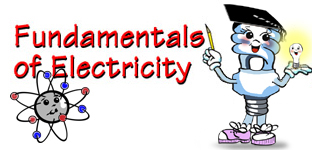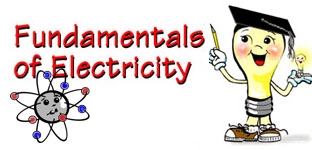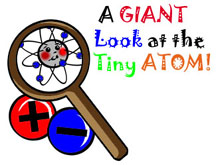 |
 |
Electricity is the most widely used form of energy. Its uses range from the miniature batteries that operate your wristwatch to huge motors that power trains and ships. Electricity operates our lights, runs our refrigerators and powers motors. It first must be changed to other forms of energy such as heat, light or mechanical to be useful. You can't see electricity but you can see what it does like when you turn on a light. Connect to Web
How It Works
Atoms make up all things. You can't see atoms because they're so tiny but you can imagine what they look like. Each atom is made up of PROTONS, NEUTRONS and ELECTRONS. Protons have a positive (+) charge, electrons have a negative (-) charge and neutrons have no charge. The protons and neutrons make up the NUCLEUS or center of the atom. The electrons circle around the nucleus like the planets orbit around the sun.
If an atom has the same number of protons and electrons it is balanced and has a neutral charge. When an electron gets knocked out of its orbit then it is called a free electron. This means the atom has a positive charge. The free electrons then may join another balanced atom giving it a negative charge. Atoms with the same charge move away from each other. But atoms with different charges attract each other. Draw Pictures
The free electrons may be attracted to atoms where there is an electron missing. When this happens continuously, the jumping of the electrons makes electrical energy we call current.
 When you touch a doorknob after
you shuffle across the carpet, you feel a shock or static electricity.
Your movement across the carpet causes you to lose some electrons. They
start jumping around from one to another and you feel a shock when you
make contact with the doorknob.
When you touch a doorknob after
you shuffle across the carpet, you feel a shock or static electricity.
Your movement across the carpet causes you to lose some electrons. They
start jumping around from one to another and you feel a shock when you
make contact with the doorknob.
